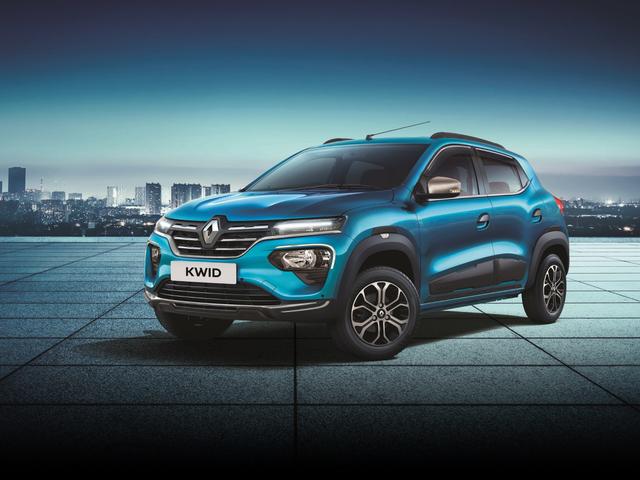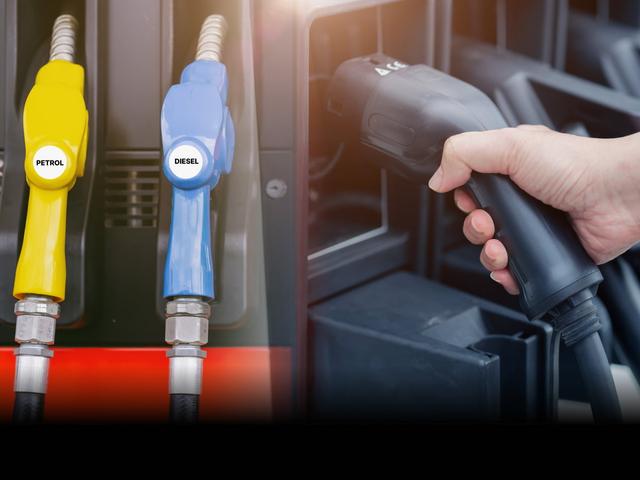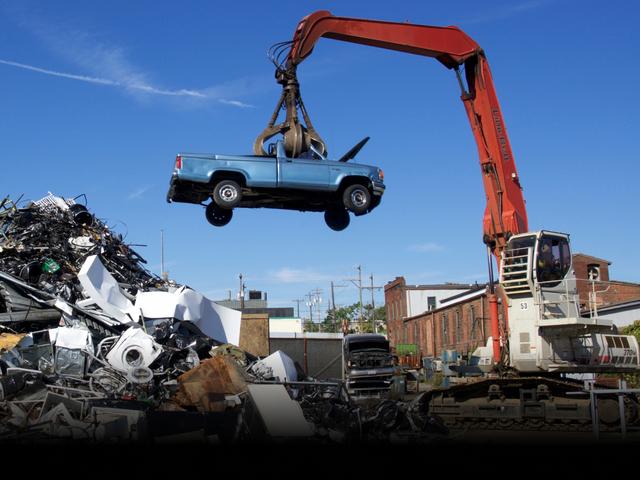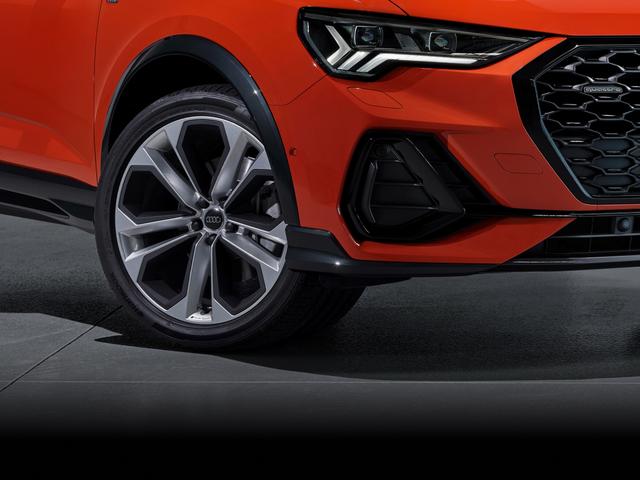


Blink blink !
Its almost here
.jpg&w=3840&q=50)
.jpg&w=750&q=50)
What is an HSRP number plate & how to apply for it?
- 1HSRP number plates help deter and reduce vehicle theft
- 2All cars and motorcycles are mandated by law to carry HSRP plates
- 3The price of HSRP plates is included in the cost of a new vehicle
- What is an HSRP number plate?
- Features of HSRP number plates
- Why are HSRP number plates important?
- Documents Required for HSRP Application
- How to apply online for an HSRP number plate
- How to install your HSRP number plate?
- How long does it take to get an HSRP number plate?
- What is the cost of getting an HSRP number plate?
- Penalties for not having an HSRP number plate
- Exemptions and special cases
- Common Misconceptions About HSRP Plates
- Conclusion
From April 2019 onwards, HSRP or High Security Registration Plates came into the picture when buying a new vehicle. At the time, it was mandated by law for all new cars and motorcycles sold in India to carry a High Security Registration Plate. While it was mandatory for new vehicles at first, subsequent policies have made HSRP mandatory for older vehicles on Indian roads too. In short, driving around without High Security Registration Plates is now a punishable offence and traffic police have the right to fine you up to ₹ 10,000 if you do so. It can get confusing understanding what an HSRP is or what you need to do in order to comply with the regulations surrounding it. To make things simpler, we have broken down the details surrounding High Security Registration Plates and clearly defined what you need to do to stay on the right side of the law.
What is an HSRP number plate?
An HSRP or High Security Number Plate is a standardised number plate for all motor vehicles in India. It is made out of mostly aluminium and is fixed to the vehicle using snap screws that cannot be removed without tampering the registration plate. Apart from carrying the vehicle number, an HSRP also carries the International Country Code for India. The code is ‘IND’ and is found on the left side of the number plate. A unique serial number is also associated with every HSRP and it is etched using a laser on the bottom right corner of the number plate. This serial number is different for both the front and rear number plates. A chromium based Ashok Chakra emblem is also present on the left top corner of the HSRP in a holographic fashion.
Since number plates became a thing on cars, we are used to seeing only two number plates (front and rear) on cars in India. However, HSRPs came into effect, there are actually three number plates on a vehicle. The first two are obvious. The third one is actually a colour-coded windshield sticker that carries the name of the state transport department, the vehicle registration number, the unique serial numbers for both the front and rear number plates, and the original date of the vehicle’s registration. This sticker is affixed to the front windshield and is part of the HSRP protocol laid down by the government.
Features of HSRP number plates
As explained above, HSRP number plates carry a set of distinguishing features. These features have been used to standardise car number plates and each of them have a role to play in achieving this uniformity.
Reflective material
HSRP plates are reflective in nature. The most commonly used plates are white in colour as these are used for all the private internal combustion engine cars plying on Indian roads. In the case of electric vehicles, the base colour is green but it is still reflective. Even in the case of taxis and commercial vehicles, the base colour is yellow and it is highly reflective in nature. The usage of reflective materials increases road safety, as the vehicles become more visible. The reflective material also allows traffic cameras to easily read the registration number at night of those vehicles that commit a traffic offence.
Standardised fonts

By using High Security Registration Plates, the government has also standardised the fonts for all number plates. This allows for uniformity, which is beneficial on multiple fronts. Law enforcement officers have an easier time reading number plates, and so do traffic management systems such as cameras. Previously, many people opted to use number plates with characters from their local languages. However, with the standardised fonts used in the case of HSRP, it becomes easy to read the registration number of a vehicle.
Security Features
Car theft has been a concern in India for decades now. One of the easiest ways for car thieves to steal and use such cars was by simply changing the number plate. However, in the case of HSRP, there is a laser etched serial number on every number plate, which is tied to the registration number of the car. There is also a chromium-based holographic symbol of the Ashok Chakra stamped on the HSRP. These two security features make it next to impossible for car thieves to duplicate number plates, and therefore, HSRP has been a major step forward in disincentivizing car theft.
Furthermore, there has been an advancement since the time HSRP first came into the picture with the government now introducing RFID tags in the plates. These tags can store crucial information about the car and can be used by RFID tags similar to the ones present at toll booths.
Why are HSRP number plates important?
As evident from the information given above, High Security Registration Plates are important for a host of reasons:
- Standardising vehicle number plates across the different states in the country.
- Using reflective material on number plates to increase vehicle visibility at night, thus improving safety.
- HSRP number plates, especially ones including RFID tags, can help track vehicles for security purposes.
- High Security Registration Plates are next to impossible to forge and dissuade car theft.
Documents Required for HSRP Application
Applying for an HSRP is a straightforward process. The only document that you are required to possess is the registration certificate of your vehicle. The vehicle registration certificate will have a bunch of information such as your engine number and chassis number, which will be required to apply for a High Security Registration Plate.
How to apply online for an HSRP number plate
If you are a new car owner, your HSRP will be automatically applied for by your dealership, and in fact, they will install the HSRP on your car before delivery. In the event you buy a car from a dealership that is not near your house, the vehicle delivery can happen on temporary number plates, and the HSRP number plates can be sent to your nearest authorised dealership. It is important to note that car makers and dealers are not allowed to charge any extra cost for the HSRP when selling a new car. The cost of the High Security Registration Plate must be included in the cost of the vehicle.
However, if you are upgrading your car to HSRP number plates or your HSRP number plate has been damaged in a manner that they need to be replaced, you can apply for a set of plates using a host of online portals. The government has contracted various portals to offer this service, however, all websites do not cater to all states in India. We have listed some of the popular websites below, and how to apply for an HSRP using them.
1. IndiaHSRP

IndiaHSRP is one of the widely used portals that takes orders for High Security Registration Plates for all 36 States and Union Territories of India. Here’s how you can apply for an HSRP for your vehicle:
Step 1: Visit the IndiaHSRP website.
Step 2: Click on Order HSRP and a new page will open.
Step 3: Enter your personal information including your name, phone number and address and then click on Next Step.
Step 4: A new page will open with the option to fill in Vehicle Details.
Step 5: Fill in your vehicle details such as the registration number, engine number, chassis number, vehicle type, vehicle model, fuel type, class type, registration date and manufacture date. All of this information is available on the Registration Certificate of your vehicle.
Step 6: At the bottom of the page, you will be required to upload a digital copy of your RC. Upload a digital copy of your registration certificate and click on ‘Next Step’.
Step 7: A new page will open with an option for some add-ons. These are mandatory and you can choose to skip them by clicking on ‘Next Step’.
Step 8: On the new screen, you will get a preview of the information you have entered along with the cost for the HSRP in question. Once you have verified this information, click on ‘Proceed Payment’.
Step 9: You will be redirected to a payment page. Once you make your payment, your order will be placed and the details will be shared with you. You can track the status of your order on the homepage of the IndiaHSRP website.
2. Book-My-HSRP

Book-My-HSRP is another popular online portal to apply for an HSRP. However, the portal only offers HSRP services to 16 States and Union Territories of India. They are Andaman and Nicobar Islands, Andhra Pradesh, Assam, Bihar, Daman and Diu, Delhi, Gujarat, Himachal Pradesh, Karnataka, Madhya Pradesh, Orissa, Rajasthan, Sikkim, Uttar Pradesh, Uttarakhand and West Bengal. If your vehicle registration belongs to one of these territories, we recommend that you use Book-My-HSRP as the website has a clear and intuitive user interface. Here’s how can you can apply for an HSRP:
Step 1: Visit the Book-My-HSRP website.
Step 2: The homepage shows multiple options. You can pick the desired option.Those who want the two number plates and the colour-coded sticker as well should choose the ‘High Security Registration Plate with Colour Sticker’ option on the extreme left. Underneath it, there will be a button that reads ‘Book’. Click on it. Even if you pick one of the other options, the below steps will remain the same.
Step 3: On the next screen, you will be required to select your State. You will also need to fill in your car’s registration number, engine number and a security captcha. Click on the ‘Click Here’ button to proceed.
Step 4: Once you have entered all your details, you will be required to select the fitment location, and the appointment slot. Post this, you will be redirected to your booking summary.
Step 5: The next step is to verify your details and pay the fee. Once you have done that, you can download your receipt and use it to track your order as well.
How to install your HSRP number plate?
For security purposes, an HSRP number plate is fixed to your car using rivets and not screws. Rivets can only be installed once, and if removed, new rivets must be used. Removing rivets can also damage the HSRP number plate, and could require you to get a new one. Therefore, it is advised to have your HSRP number plate installed from an authorised centre. In the case of new vehicles, the dealer will install these plates using a special tool. If you have ordered HSRP plates for an older vehicle, then, your fitment location will install the HSRP number plate using the special tools. We strongly advise against trying to install your HSRP number plates at home, as at the very least, it can damage the number plate.
How long does it take to get an HSRP number plate?
Once you have placed your order, it takes about 3 to 5 days for your HSRP number plates to be made. Post that, it is couriered to your fitment location, which can take about a week more. Once the HSRP plate has reached your fitment location, affixing it to the vehicle is a 5 to 10 minute job. Therefore, it can take about 10 to 15 days to complete the entire process of installing an HSRP number plate, right from ordering it to installing it on your vehicle.
What is the cost of getting an HSRP number plate?

While new car buyers do not have to pay any extra money for an HSRP number plate, existing car owners do need to shell out from their pocket to acquire an HSRP number plate and have it installed on their vehicle. This fee can fluctuate from state to state and from vendor to vendor. The fee is also different based on the type of vehicle such as a two-wheeler, three-wheeler or four-wheeler. However, in the case of four-wheelers, the fee is generally fixed at Rs. 1100 for a set of HSRP number plates. Some portals charge an additional fee for delivery of plates as well. Keep in mind that this cost is on top of anything you would have to pay for a fancy number.
Penalties for not having an HSRP number plate
While HSRP is a standard number plate for all vehicles in the country, the fines pertaining to HSRP are not. In fact, while the central government has already mandated that HSRP is not required on all private and commercial vehicles in India, some smaller states are still to enforce this rule strictly. In the case of others, the transport department has been working proactively to make sure older cars switch to HSRP plates.
On this basis, each state is allowed to impose their own penalty on non compliance with HSRP plates. For example, motorists in Karnataka are being fined between ₹ 500 and ₹ 1000 for not having HSRP plates. For the same offence, one can be asked to cough up between ₹ 5000 and ₹ 10000 in the state of Uttar Pradesh. Ultimately, sooner or later, all states will start issuing fines for non compliance if you don’t adopt HSRP plates.
Exemptions and special cases
The government has been particular about enforcing HSRP plates across the spectrum and that means, private cars, commercial vehicles, buses, trucks and most forms of motor vehicles will have to use HSRP plates. However, there are some exceptions in the cases of vintage vehicles and classic cars. Certain agricultural machinery is also exempt for this rule, but the ruling on this ultimately lies with the RTO.
Common Misconceptions About HSRP Plates
- Having an IND logo on the number plate doesn’t make it equivalent to an HSRP. Some websites offer decorative plates that look like HSRPs but are in fact ordinary number plates.
- HSRP number plates cannot be used to track you in real time. For that, one requires the presence of a GPS sensor on the number plate. Instead, HSRP number plates are equipped with RFID tags that can be read at toll booths. This information can be used to create a basic timeline of your travel.
- The cost of HSRP plates is included in the price of a new car. Dealers are not allowed to charge extra for HSRP plates when buying a new car.
Conclusion
HSRP number plates or High Security Registration Plates have been implemented to centralise the countrywide vehicle database and for vehicles to be easily linked with their owners. HSRP number plates also increase the safety of vehicles at night, and help mitigate car theft. While it is an added step for owners of older cars to install HSRP on their cars, the process is pretty straightforward. For those who still want a bit of individuality to their number plates, VIP number plates can do the trick.
Frequently Asked Questions
Expand all

Blink blink !
Its almost here













.jpg&w=640&q=75)









Blink blink !
Its almost here



-(1).jpg&w=828&q=75)

.jpg&w=828&q=75)

-(1).jpg&w=828&q=75)
.jpg&w=828&q=75)
.jpg&w=828&q=75)
.jpg&w=828&q=75)

